Punjab Floods: Of Politics, Polemics, and Pragmatism
Rescue, Relief and Rehabilitation: Navigating Politics, Polemics, and Pragmatism in the Face of Unprecedented Natural Calamity
Introduction:
The title "Punjab Floods: Politics, Polemics, and Pragmatism" aptly encapsulates the multifaceted nature of the recent floods in the state of Punjab. This natural disaster has not only brought about widespread devastation but has also ignited political discussions, contentious debates, and the urgent need for practical, effective solutions. As we delve into the complexities of the Punjab floods, it becomes evident that political factors, polemics, and the imperative of pragmatism intertwine to shape the discourse surrounding this devastating event.
Chief Minister, Mr Bhagwant Mann— hands-on approach; on-the-spot assessment
Politics: A Clash of Perspectives and Agendas
The floods in Punjab have become entangled in the realm of politics, with various parties and stakeholders offering differing perspectives on the causes, handling, and consequences of the floods. This divergence of viewpoints can lead to the exploitation of the situation for political gains or the initiation of blame games, turning the floods into a battleground of ideologies.
Polemics: Debates, Controversies, and Alternative Narratives
Within the discourse surrounding the Punjab floods, polemics take center stage. Controversy, argumentation, and strong opinions dominate the discussions, reflecting conflicting viewpoints and heated debates. Failures are scrutinized, and criticisms of the government's response are plentiful. Alternative narratives emerge, challenging official accounts and fueling an atmosphere of contention, making it challenging to find common ground.
Pragmatism: Seeking Realistic Solutions
Amidst political maneuverings and polemical debates, the need for pragmatism shines through as an urgent requirement. While political interests and ideological clashes persist, there is recognition that practical, realistic solutions are crucial to addressing the challenges posed by the floods. Efforts to mitigate the impact, assist affected communities, and prevent future calamities take precedence alongside the debates and criticisms. Pragmatism becomes the driving force behind collective action.
Flood— a multi-dimensional problem:
Now, let's explore and examine some key aspects related to the complex issue of flooding in Punjab and some of the key aspects regarding the multi-dimensional problem of flood in Punjab.
Understanding Dam Limitations
Chief Minister, Punjab, takes a pro-active review with all the Deputy Commissioners in the State, regarding flood-protection works for Monsoon-2020.(14.2.2020)
Punjab's major rivers, namely Sutlej, Beas, and Ravi, are controlled by Bhakra, Pong, and Ranjit Sagar dams, respectively. However, the absence of a storage dam1 on the Ghaggar River makes it the most vulnerable during heavy rainfall in its catchment area. While these dams are effective in absorbing inflows from rainfall and glacier melting, they become less effective when heavy rain occurs downstream or tributaries join the main rivers. Currently, the major reservoirs in these dams still have enough capacity to handle the current flood situation. The real concern arises during unseasonal rains towards the end of September when the dams are already full, and opening the floodgates becomes necessary to ensure the safety of the dams. It's important to note that the dams must maintain a minimum water-flow level to keep the electricity-generating turbines operational.
Navigating Disaster Management
In times of floods, the responsibility falls on the Deputy Commissioner to initiate rescue, relief, and rehabilitation— the three R’s of disaster management— efforts swiftly. Effective disaster management requires coordination among multiple departments such as the revenue (tehsil and patwar agency), police, rural development, irrigation & drainage, health, and power. Timely heeding of warnings issued by district administrations and meteorological departments provides valuable reaction time for residents.
Challenges Beyond Politics
While political discourse and polemics dominate discussions, it is important to shift focus to immediate challenges. Issues such as corruption in flood-protection works, poor workmanship, illegal mining, and obstruction of natural drainage due to urbanization are valid concerns but offer no immediate solutions. Stakeholders must prioritize relief efforts and work collaboratively to address challenges posed by the floods, setting aside political point-scoring.
Government Response and Public Participation
Flood Control Board Meeting, chaired by the Punjab Chief Minister. All DCs attended (6.4.2013).
During floods, the Deputy Commissioner represents the government at the district level, coordinating with multiple departments, NGOs, and civil society organizations. It is crucial to ensure that visits by the VVIPs, including the ministers, do not disrupt ongoing relief work. Local communities play a significant role in providing support through food supply, tractors for rescue operations, and relief coordination. Effective coordination between NGOs and the district administration prevents duplication and ensures aid reaches the most affected areas.
Media's Role and Responsibility
Media, including print, electronic, and social media, plays a crucial role in disseminating information during times of crisis. Real-time updates and visuals shared on social media can create panic if not contextualized correctly. While it is important for the media to highlight deficiencies in the district administration, during rescue operations, emphasizing positive aspects bolsters public morale. Collaboration, not credit-seeking or blame allocation, should be the priority during the rescue phase.
Limitations of Flood Protection Works
Understanding the complexity of the problem — at Amritsar, India-Pak border, in Ranian-Kakkar Sector of Lopoke Police Station (22.07.2012)
River Ravi in spate in village Daurangla, district Gurdaspur
Flood protection works have their limitations and often result in diminishing returns. Efforts made to protect one area can inadvertently lead to erosion in another. With limited funds, balancing ecological impact and protection becomes vital when allocating resources for flood protection works2. Only optimization rather than maximization of the safety features can be aimed and achieved.
The situation is unique for the river Ravi, as it forms part of the international border between India and Pakistan. We have no control over flood-protection works on the Pakistani side, where they have built significant defense-cum-flood protection structures that push the river towards Indian territory. The natural slope of the land further exacerbates the situation, with rivulets like Basantar Nala, Jalali, and Unjh joining the Ravi downstream of the Ranjit Sagar Dam (RSD), increasing its capacity to cause damage. The completion of the Shahpur Kandi Dam Project by 2025 will provide much-needed relief for our border districts facing the unpredictable nature of the Ravi. Till then our three border districts— Amritsar, Gurdaspur and Pathankot— will have to face the fury of the capricious Ravi.
Central Government Assessment and Additional Relief
Engaging with the Central Team at Mohali, as FCR, 12th September, 2019.
After the occurrence of floods, a Central Government team is typically dispatched to assess the damage and propose additional relief measures. However, there may be instances where their arrival timing does not accurately correspond to the actual extent of the damage, resulting in potentially underestimated assessments. The process can sometimes prioritize optics rather than genuine support, with reports influencing the nature of the additional aid provided by the Central Government. Nonetheless, it remains a significant component of the collaborative efforts between the central and state governments to address the situation.
Army in aid of Civil Authority:
Army in aid of civil authority— Moonak, district Sangrur; plugging breach in River Ghaggar (22.07.2019)
The requisitioning of the Army in aid of civil authority is considered a measure of last resort, rather than the primary course of action, in response to floods in Punjab. This is particularly true today with the presence of fully-trained and equipped teams from the National Disaster Response Force (NDRF) and State Disaster Response Force (SDRF), who lead the rescue operations. The intervention of the Army is therefore sought only when the magnitude of the disaster surpasses the capabilities of civil authorities. In such cases, the Army's specialized skills, resources, and manpower are deployed to provide essential support for rescue, relief, and rehabilitation efforts.
On the other hand, the involvement of the Air Force in Punjab floods is relatively limited, primarily focused on conducting air rescue operations in situations where immediate threats to human lives exist. However, given the nature of floods in Punjab, ground-based operations are more commonly employed, rendering Air Force assistance relatively infrequent in such circumstances.
Prescription and Way Forward: Pragmatic Action in the Face of Adversity
Despite the recent floods in Punjab presenting significant challenges, the resilience of its people and the proactive administration have played vital roles in the state's recovery from previous flood incidents. Notably, the current political leadership has demonstrated full engagement, with senior ministers and MLAs actively present on the ground. Rather than engaging in political point-scoring or apportioning blame, it is imperative to view the crisis as an opportunity for collective action. By prioritizing practical and effective solutions, capitalizing on the strengths of local communities, and fostering cooperation among various stakeholders, including political parties and the SGPC, Punjab can emerge stronger from this disaster.
Once the immediate challenges posed by the floods have been adequately addressed, it becomes crucial for all stakeholders to come together and conduct a comprehensive assessment of the post-flood situation. This evaluation should serve as the foundation for developing a comprehensive and time-bound strategic plan aimed at minimizing the impact of future floods.
Kaushalya Dam on Ghaggar, near Pinjore, is essentially for drinking water supply and has limited storage capacity.
VIDEO.This is for those who wanted to know what exactly we do to tame the wanton rivers.
Newly constructed Revetment under SDRF near village Samrala (River Ujh), district Gurdaspur. (Video from 8th August, 2016)
https://www.facebook.com/713682778/videos/10153994306867779/
(Highlight, right-click and then click on “go to”. On mobile, copy and place it in your web browser to search. It’s a rather scary video.)




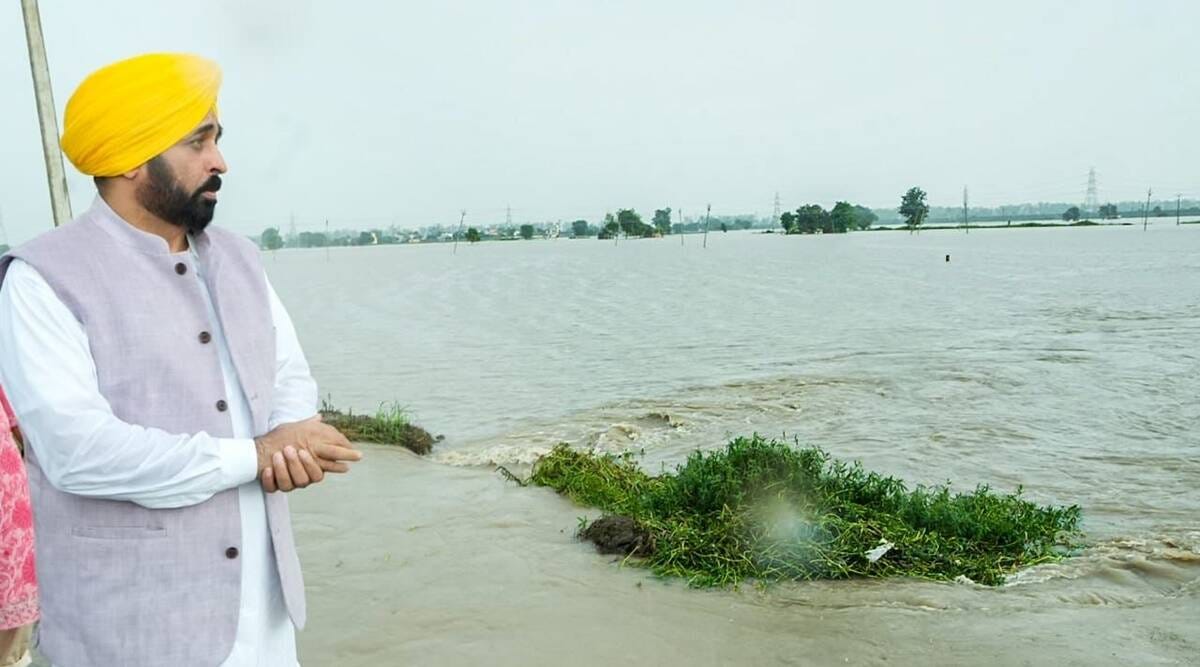


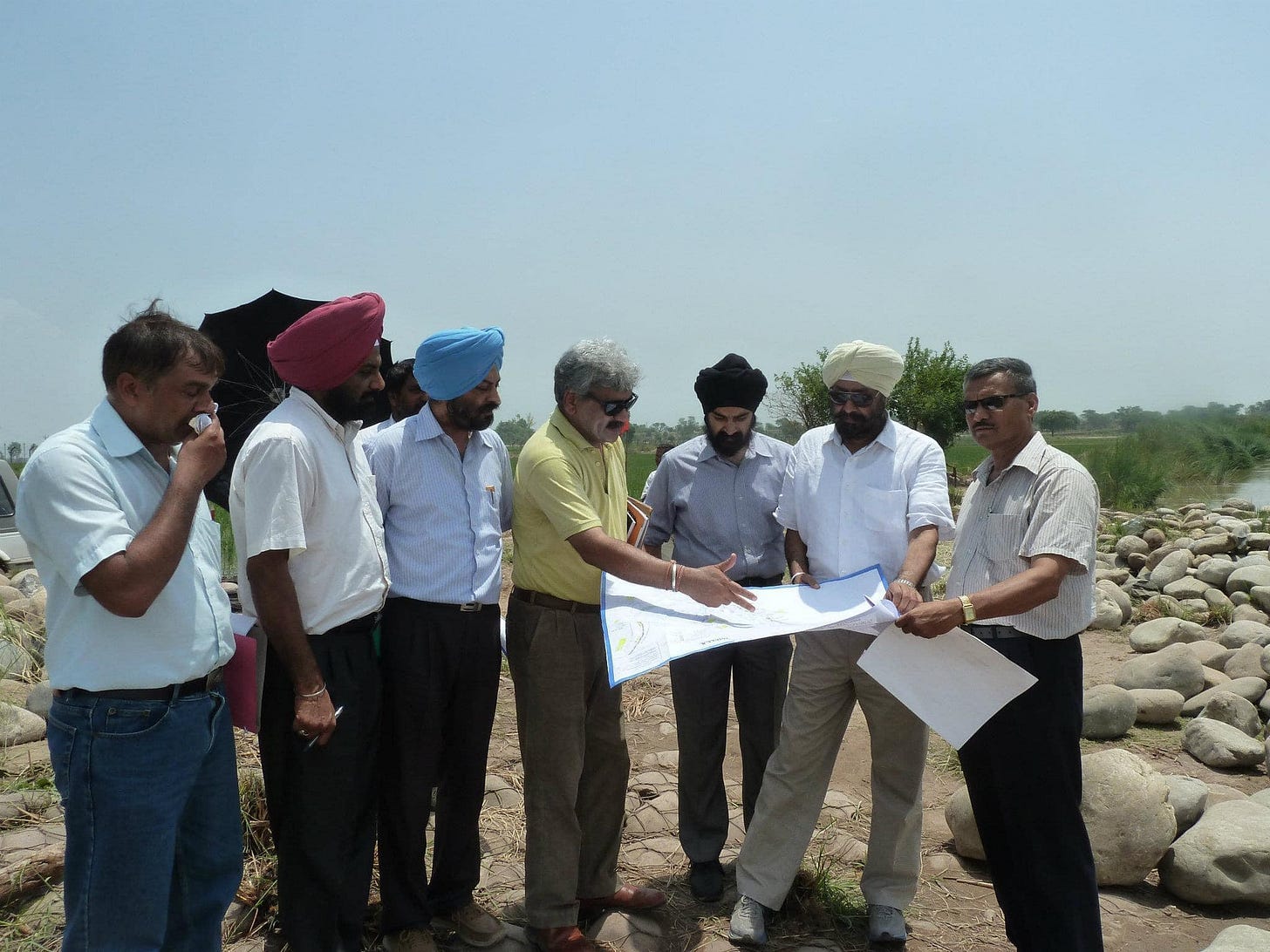

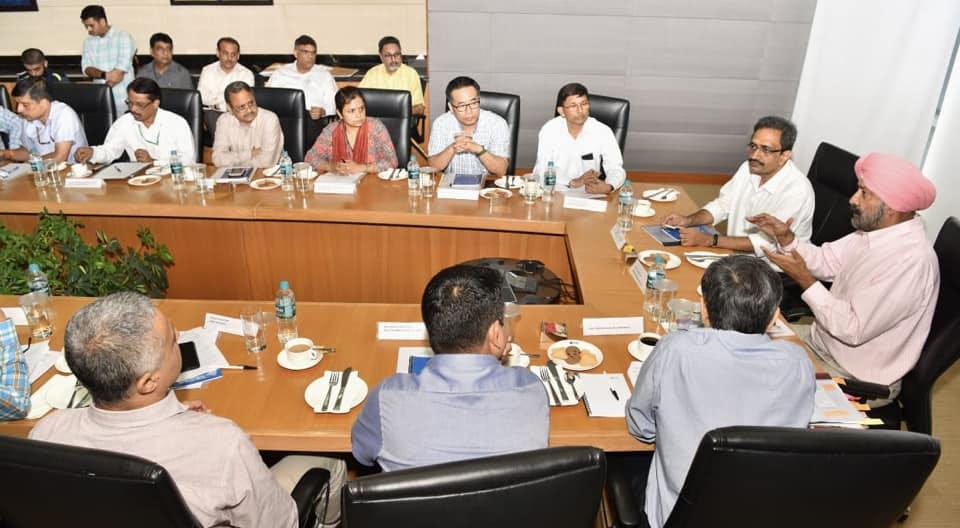
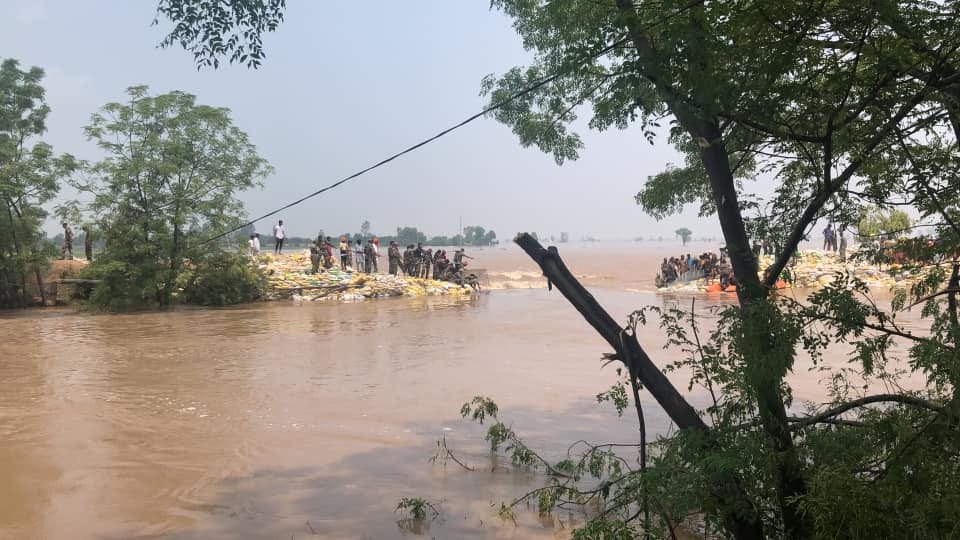
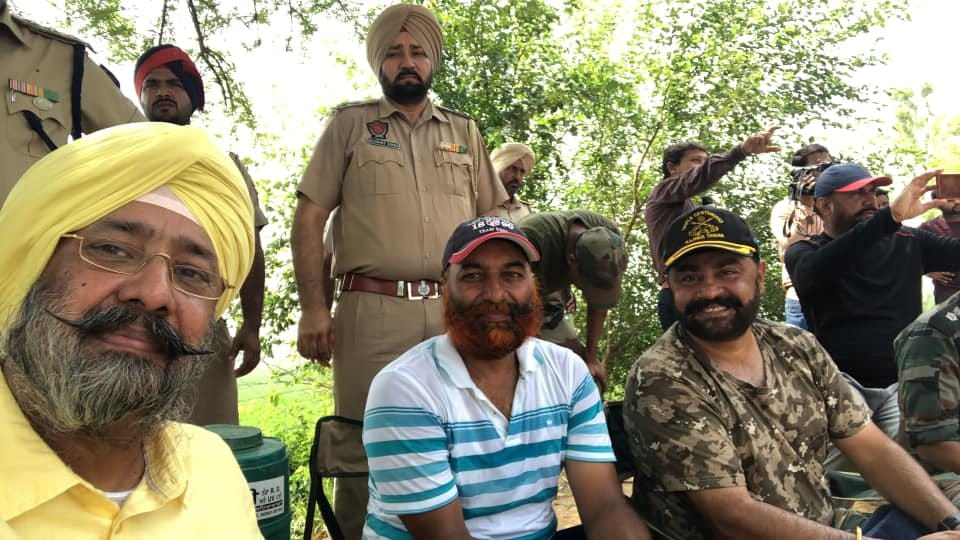
Our batchmate, Shri Davinder Kumar Garg (aka Garcha), who retired from Assam-Meghalya cadre in the year 2015, and is now settled in Chandigarh, sent me the following comment: I am reproducing it with his consent:
"A comprehensive article on floods in Punjab and adjoining area. The river Ghaggar is the big culprit as it flows in the interior of Malwa belt. The river Satluj does not damage that much as it flows some Northern parts of Punjab and gets merged in the Punjab plains of Pakistan and the meets them river Indus somewhere down to finally fall in Arab Sagar.
My Assam experience is witness that flood protection works do not withstand in front of fury of nature of this magnitude. These works are only display of political gimmicks. The river bed of like Ghaggar river is a victim of unplanned urbanization. The river plains are under unauthorised occupation and having huge colonization.Resultantly the river bed has become shallow. Being hilly river, the flood water from the catchment area moves very fast like gushing on the shallow bed and the river bed being shallow have limited capacity to absorb the flood waters. The torrential water gets overflowed with speed and does huge devastation.
To my mind the viable solution is digging or dredging the river bed and renovating and reconstructing the huge water bodies in the erstwhile river plains. Ghaggar being small river, it is financially possible to take digging/ dredging the river bed as protection measure. Brahmaputra in Assam valley is huge and economically not possible to taking dredging of the river bed. Alternatively we go for embankments days which is just wastage of public funds."
Davinder Kumar, IAS (retd.) (1984 batch- Assam-Meghalya cadre)